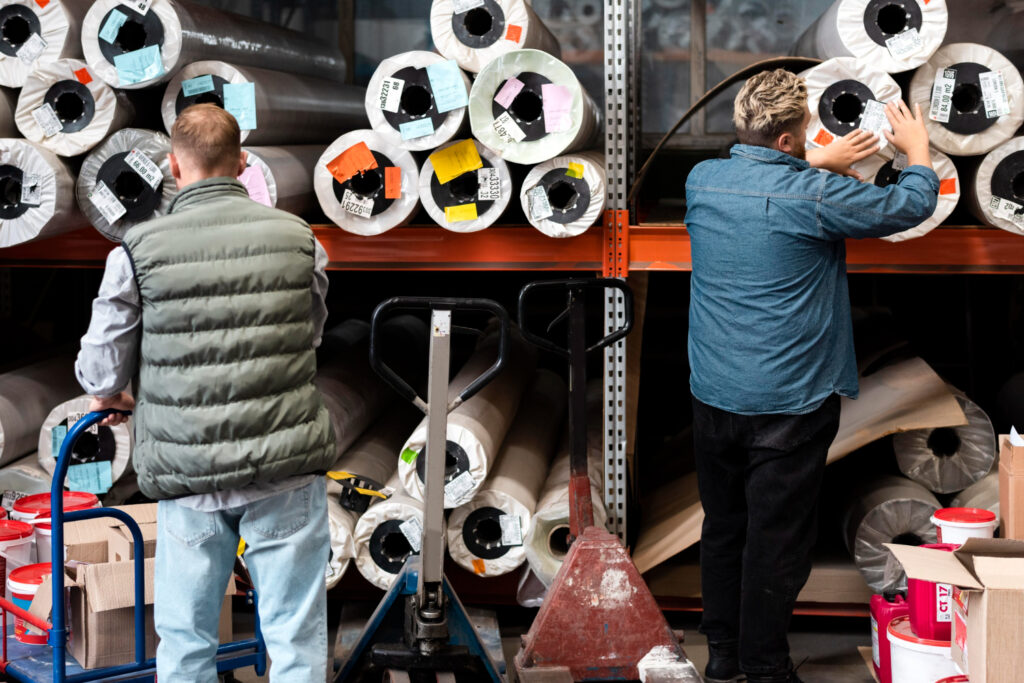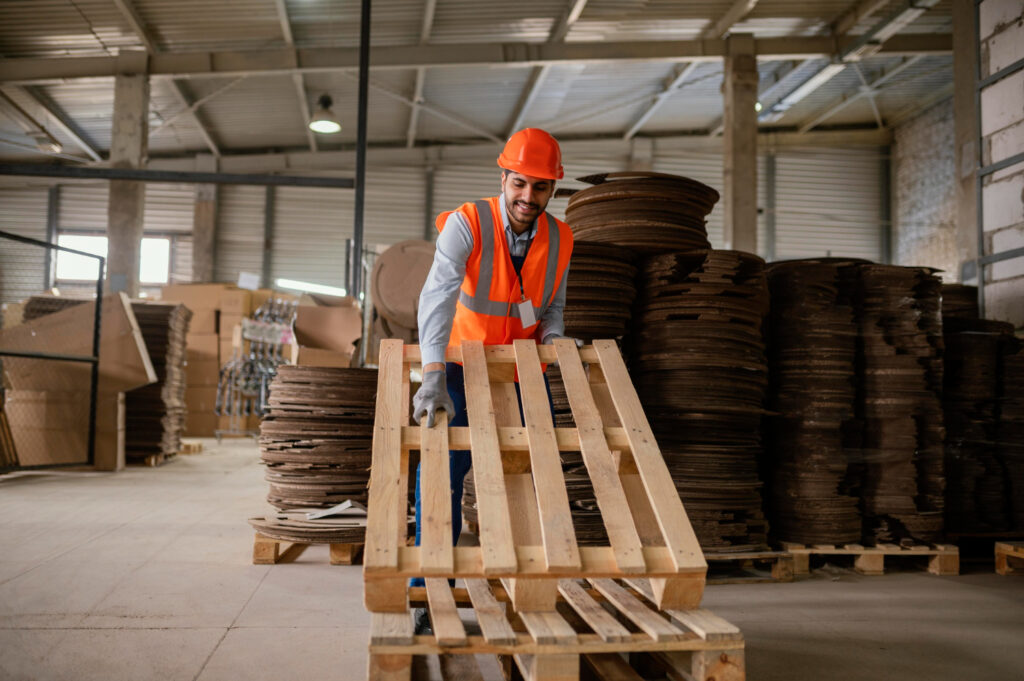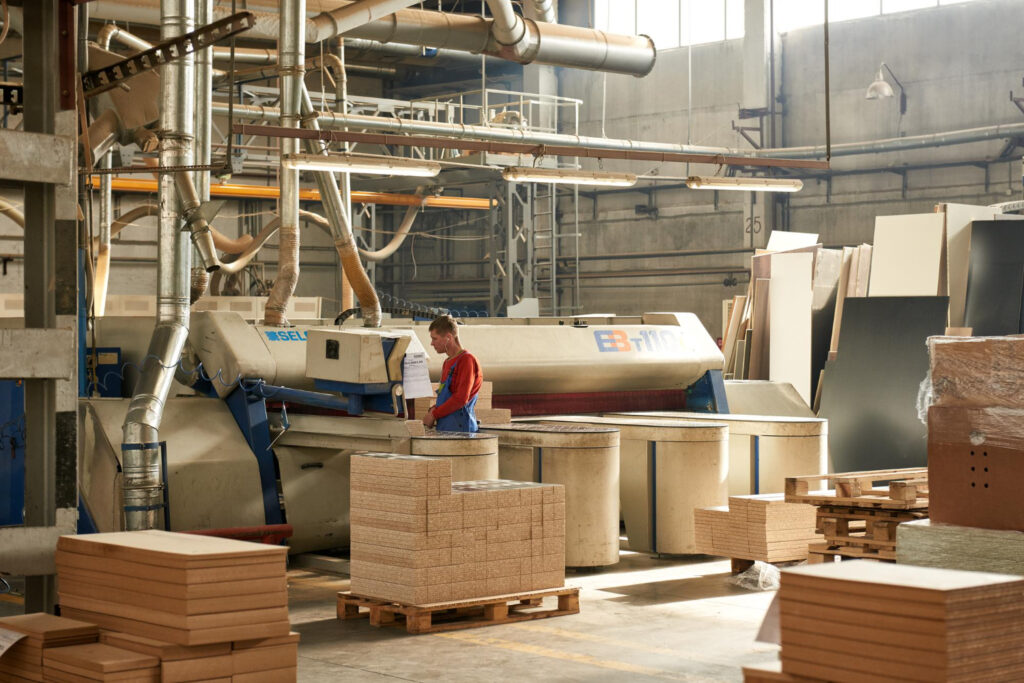Materials handling is essential to any warehouse or third-party logistics (3PL) operations. From traditional forklift trucks, pallet jacks, and conveyors to the most advanced robotics technology, each element has its role in ensuring a successfully organized warehousing facility.
With space utilization, speed, and accuracy becoming increasingly crucial for business success and profitability, accurately managing material placement and movement within a warehouse are essential to keep up with customer demands.
In this post, we cover how to effectively manage materials handling activities—from determining what equipment should be used at different stages of your supply chain process to implementing best practices that ensure safety standards are met while maximizing efficiency.
Why Is Material Handling Important?
Material handling is an essential component of any workplace, as it helps to keep operations running smoothly and efficiently. By transporting goods safely and quickly, material handling can help save time, and money and result in fewer mistakes.
For example, efficient material handling processes allow manufacturing plants to produce goods faster and decrease production costs. This also renders better customer service for end-users who rely on the fast delivery of products that workers quickly handle in a warehouse.
Furthermore, strategically placed storage racks can reduce human labor when loading or unloading products from trucks.
Proper material handling also reduces the risk of accidents due to manual labor, such as moving large items without mechanical assistance or incorrectly lifting too heavy boxes.
When implemented correctly, this process ensures that goods are transported, stored, and retrieved without any issues, saving everyone time, energy, and resources.

Material Handling Through The Supply Chain
Manufacturing
An essential part of any successful production process is efficiently handling materials through the manufacturing supply chain.
Adequate material handling ensures that suppliers and customers are happy, providing cost savings, improved efficiency, and fewer losses due to mishandling or delay. Proper material handling is critical to maintaining a smooth flow from beginning to end when working with complex systems with multiple components from different sources.
Optimizing the materials flow for manufacturing makes it possible for products to be produced on time and at the best price point. Companies must invest in quality machinery such as cranes, conveyor belts, and trucks that make material transportation reliable and fluid.
Alongside investing in state-of-the-art equipment, timely training for dedicated staff can help ensure that best practices for moving materials around efficiently are followed at all times.
Transportation
Transportation is an essential element of the supply chain regarding material handling. Without it, getting materials from production sites to buyers would be complex and inefficient.
One way transportation has become easier to manage through shipping software, which streamlines data-driven processes such as quality control logistics and international delivery.
This allows transportation experts to create efficient routes and codes that unlock material handling potential within the supply chain.
Additionally, these technological advances in transportation have allowed companies to save resources that would usually be spent sorting out manual paperwork or facilitation through a 3rd party.
Storage And Warehousing
Material handling through the supply chain is an integral part of economic development and growth.
Storage and warehousing systems play a significant role in efficiently getting materials to and from manufacturing facilities to create goods and products that have real-world utility and value.
From refrigerated stockings to bulk storage units, modern warehouses come in various sizes, shapes, and functionalities; each tailored to the specific needs of unique businesses, their clients, and their location.
By utilizing specialized forms of shelving, tracking technologies, inventory management programs – and even automated sorting – material handling can be both practical and cost-efficient when adequately planned for and executed.
Distribution
The material handling of goods through the supply chain is vital to successful distribution and storage.
In a warehouse setting, material handling’s importance becomes even more critical due to the high volumes of goods passed through the facility at any given time.
Streamlining material handling processes in a warehouse increases product flow and reduces levels of chaos. Some popular material handling options include conveyor systems, manual transport carts, and automated guided vehicles.
Proper material handling can differentiate between a chaotic work environment and an optimized workflow that speeds up customer delivery times.

Material Handling Equipment Essentials
Forklifts
Forklifts are essential material handling equipment, making material transport and storage much more efficient. Appropriately used, forklifts can speed up the material flow and eliminate the possibility of injury from manually lifting heavy items.
They also improve access to material that would otherwise be out of reach for workers. Ultimately, forklifts help to reduce expenses related to material handling, which allows companies to continue operating in a cost-efficient manner.
Pallets
Material handling in warehouses is an essential part of operations, and one key element therein is the use of pallets. Pallets come in various materials; some are made of plastic, others of wood.
Either material yields a sturdy foundation for transporting goods from one location to the next, internally to other parts of the warehouse, or externally to clients.
The versatility of pallets can help material handlers address their needs efficiently and effectively, as they offer a diverse set of options for material handling solutions.
Packaging
Material handling in warehouse environments is essential for various reasons, but the packaging is one of the most critical elements.
This process involves safely and securely wrapping products while ensuring they are ready to ship. Material handling equipment allows this process to take place quickly and efficiently, minimizing downtime and protecting the material and related equipment.
Hoisting Equipment
When material handling in warehouse environments, hoisting equipment is essential.
Hoists provide a secure and reliable way to maneuver and lift material from ground level or inside containers, making it easier and safer for workers to transport material from one spot to another.
With a wide range of available hoists, warehouse managers can easily find ones that fit their material handling needs. Hoisting equipment also helps reduce strain on workers by allowing them to handle material more safely and efficiently than if they were doing it manually.

Best Practices For Effective Material Handling
Set Up Warehouse For Efficiency
One of the best practices to achieve efficient material handling in warehousing is to set up the entire warehouse according to a predetermined plan. Start by mapping out the floor layout and assign dedicated departments or zones for specific materials or activities within each zone.
All personnel should adhere to the established material handling, sorting, staging, and delivery procedures. Labeling of material containers clearly should also be included.
Proper use of signage and labels will go a long way toward improving material handling efficiency in the warehouse. Last but not least, companies should consider investing in material handling machinery specifically suited to their unique operational needs.
Reverse Logistics
Reverse logistics is a form of material handling that has become increasingly important for efficient warehouse operations. Material handlers are being asked to increase turnaround times and ensure efficient customer order fulfillment – something that can’t be realized without an effective reverse logistics process.
With this material handling, companies must ensure the inventory moves backward through the supply chain, such as sending returned returned items or material from customers to suppliers or vendors.
This requires setting up efficient ways to track outgoing or incoming items and assigning personnel with the necessary skill sets. Streamlining material handling through reverse logistics means expediting the return process and reducing losses due to improper product tracking.
Have The Right Equipment
Vehicles for material transport should be reliable and able to carry the material without any damage.
It is also beneficial to have front-end loaders, palletizers, conveyors, and other material handling equipment as applicable for warehouses that need to process hundreds of different items moving along production lines per day.
Finally, hiring well-trained drivers with experience maneuvering material-handling vehicles around tight spaces in a controlled and efficient manner is imperative to successful material-handling processes in a warehouse.
Automate
Automation is quickly becoming the best practice for material handling in warehouses. Automation can help reduce manual labor while increasing accuracy and efficiency – resulting in cost-saving over time.
Automating material-handling tasks also reduces employee safety risks, as injuries related to material handling are avoided.
Additionally, automation helps foster a more organized warehouse environment, reducing errors caused by relying on manual material movement or storing processes.
Record, Assess, and Adjust
Utilizing material handling in warehouses is necessary for efficient operations. To maximize this process, approaching material handling with the best practices should be implemented, which is to record, assess, and adjust accordingly.
Recording material movements allows visibility into the material handling process while assessing the material flow helps to identify any unnecessary delays or redundancies that can benefit from adjustments.
By doing so, business owners can pinpoint areas of improvement to increase productivity and overall material performance within their warehouses. Adjustments can then be made to enhance material movement and create an effective supply chain workflow.
See How Detrack Can Help Manage Your Material Handling Today
If material handling in the warehouse is problematic due to its complexity and tediousness, then you must start instituting Detrack into your supply chain process.
This cutting-edge technology streamlines material delivery, allowing managers to stay on top of inventory and easily keep track of their material handling needs through implementing predictive ordering based on repetitive deliveries.










